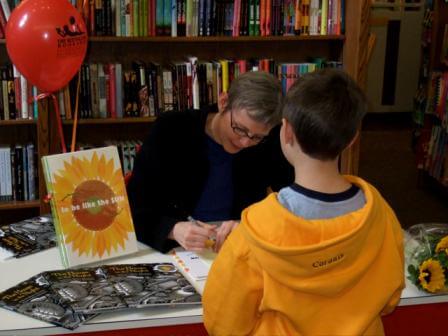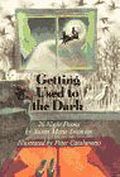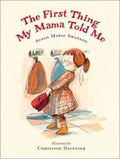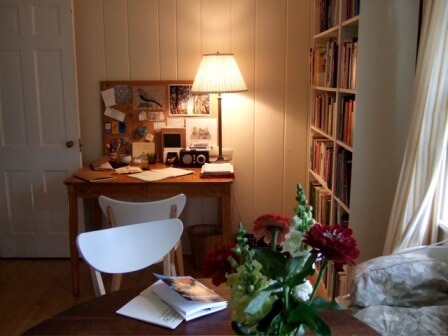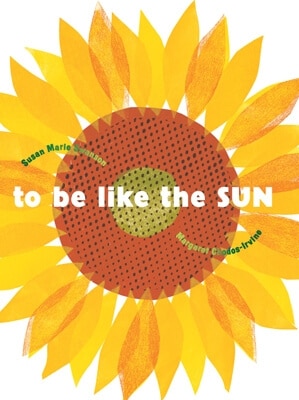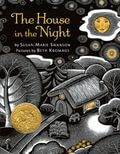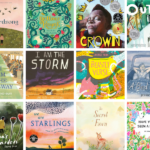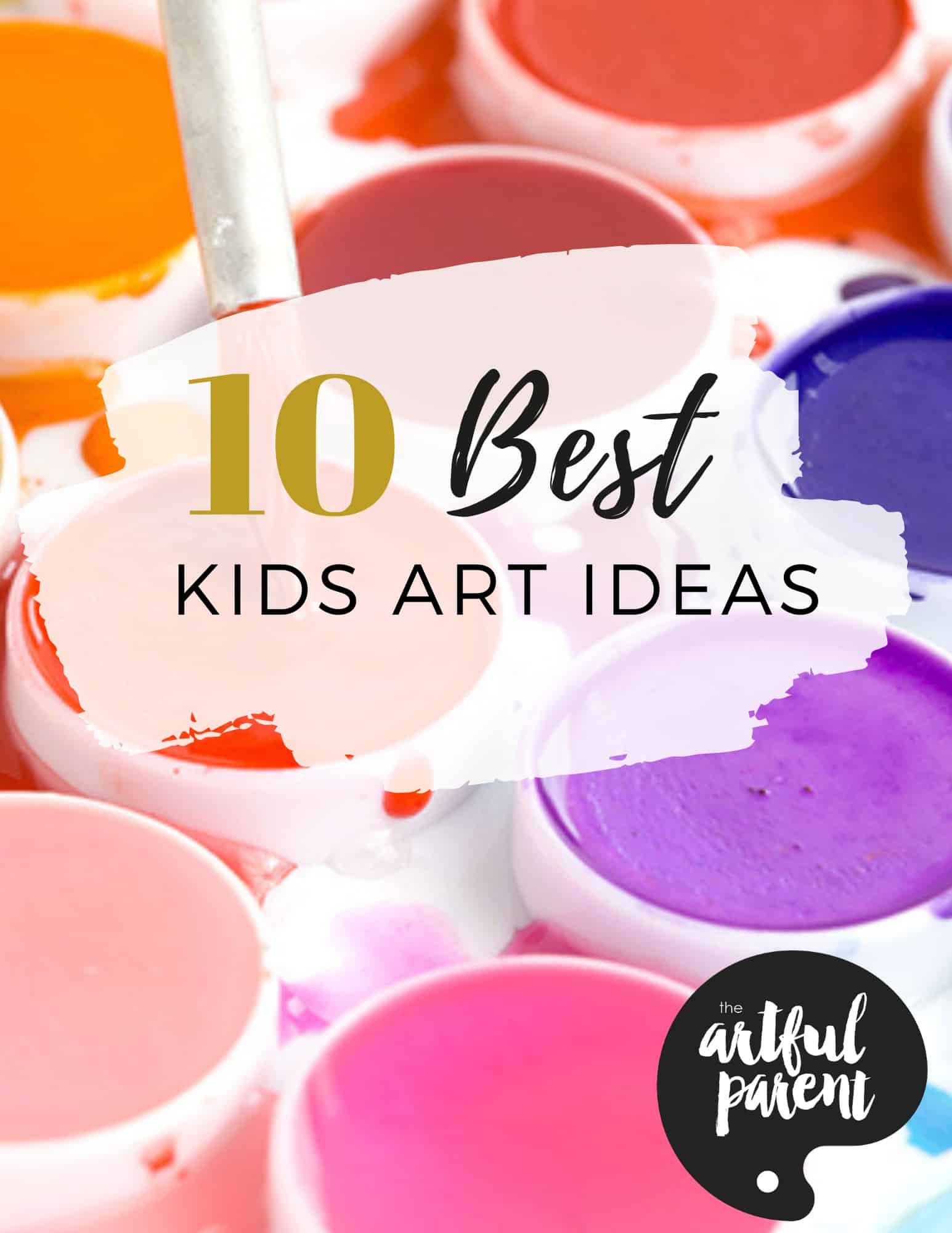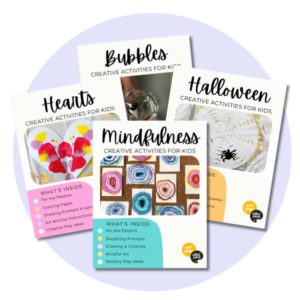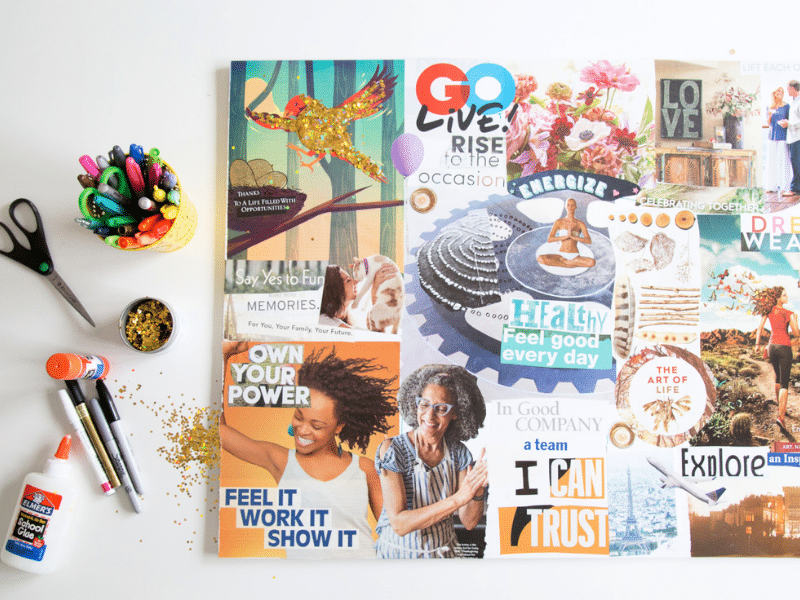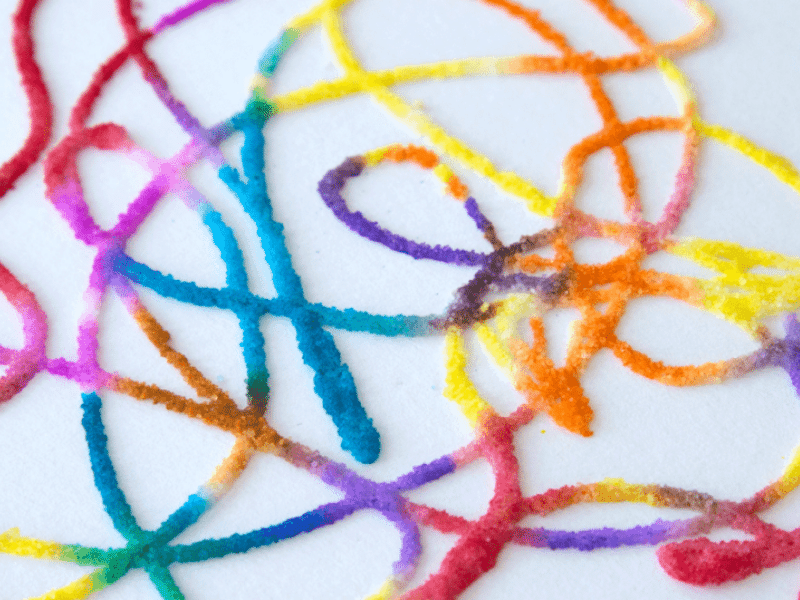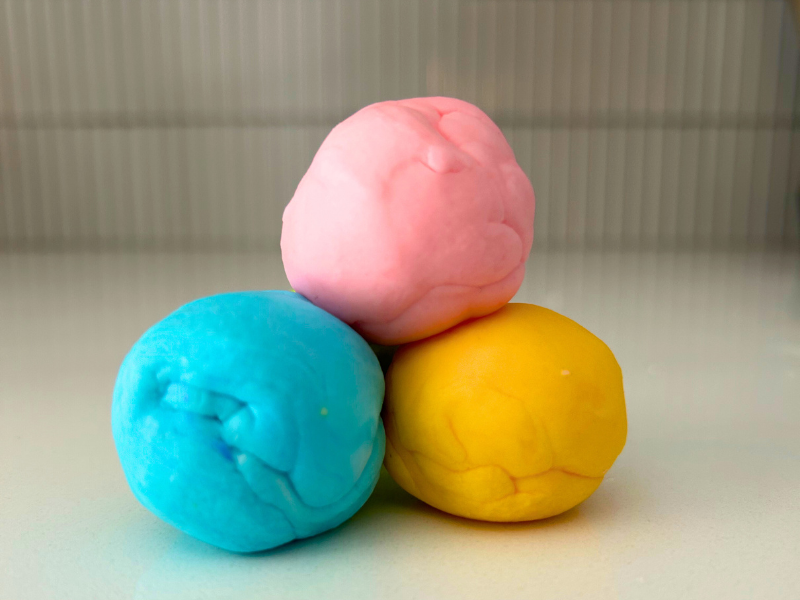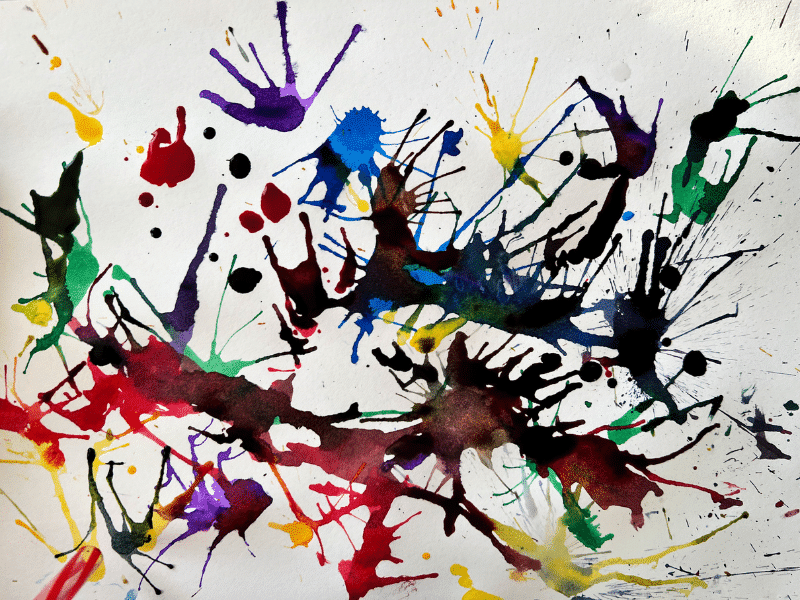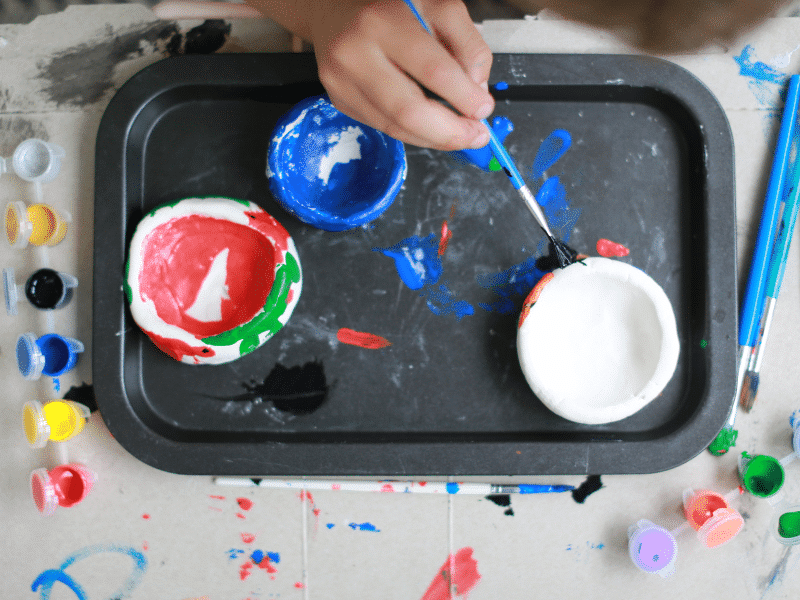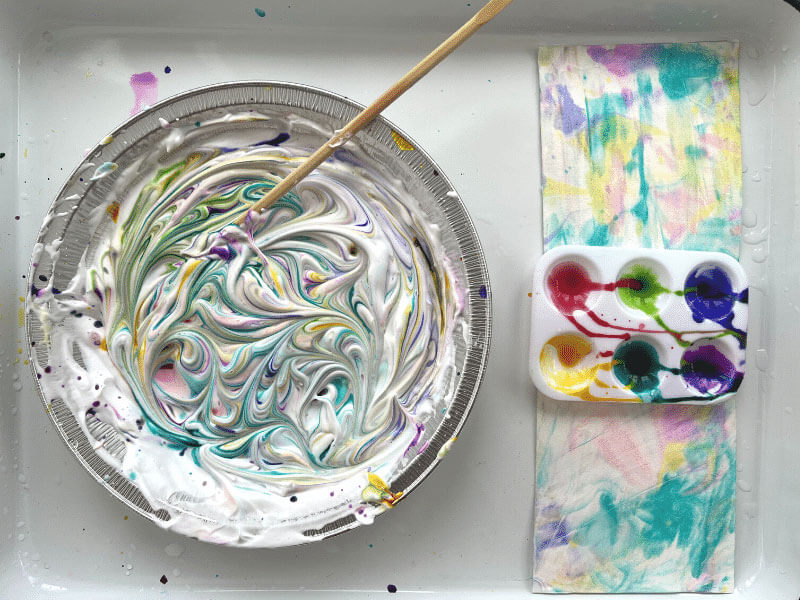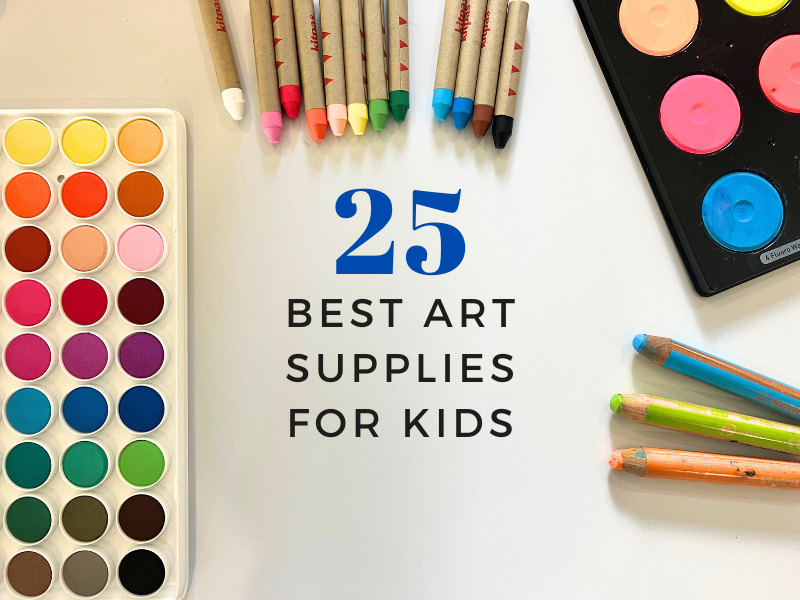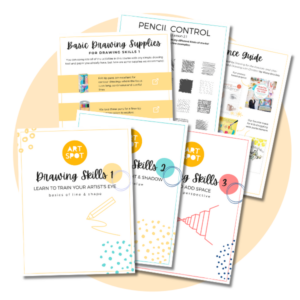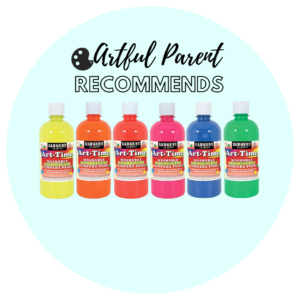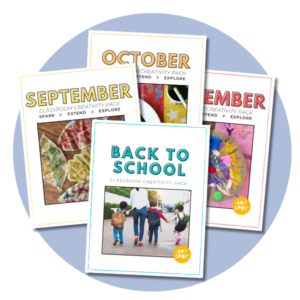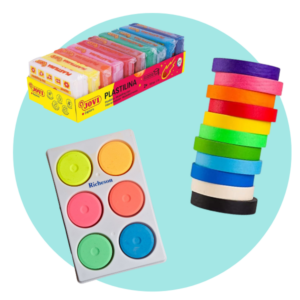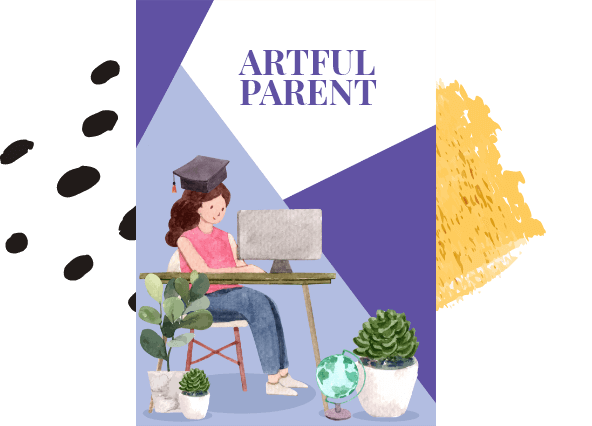Susan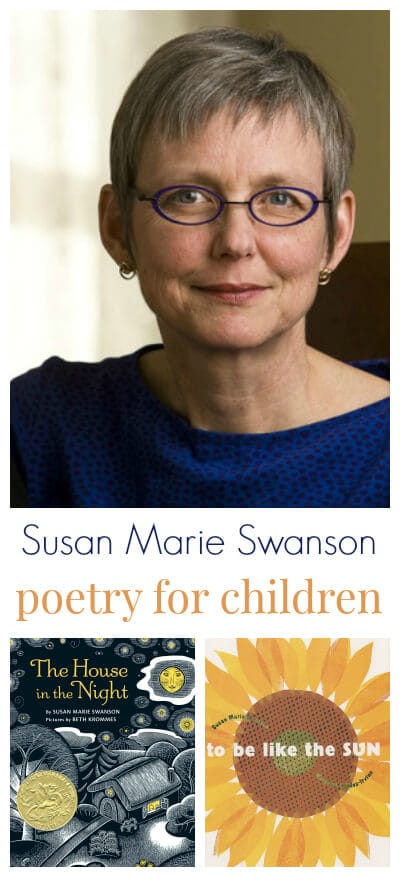
Here she shares her own experience on writing poetry for children as well as her favorite children’s poetry books and tips for getting kids started writing poems.
JEAN: First, can you tell us a bit about yourself and how you got started writing poetry? How was your creativity encouraged as a child?
SUSAN MARIE: I grew up singing folk songs with my family and playing outdoors in all weathers. Those things have stayed with me all of my life. I cannot think of a more encouraging beginning for creative work.
The way I think of it now, my vocation is literature and my professional home is in children’s literature. Maybe it’s a house kind of like Pippi Longstocking’s Villa Villekulla. I do love how Pippi inhabits that ramshackle place with her whole imagination.
I did young-poet things in my twenties, sending work off to literary magazines and sending myself off to graduate school for an MFA in poetry, reading lots of poetry, and befriending poets (both in person and in my imagination).
JEAN: What made you move from writing poetry in general to writing it for children?
SUSAN MARIE: Writing poems with children in a writers-in-the-schools program sparked my involvement in children’s literature. So did reading with my own children, of course; but, because I was already deeply involved with literature, before I knew it I was writing reviews of children’s books, studying elementary education, connecting with others interested in children’s literature – and trying to figure out how what I am given to say as a writer might find its way into the children’s book world.
Early on I got encouragement from two extraordinary editors. Richard Jackson published my first book, a volume of poems for young readers called Getting Used to the Dark; and Allyn Johnston championed the text that became The First Thing My Mama Told Me, a picture book.
JEAN: Which of your books did you have the most fun with? Why?
SUSAN MARIE: Oh, I can honestly say that I have had a wonderful time with all of my books! But, really, it is all one big project: me and my notebook on a journey through the world. A big part of my work is simply to do all that I can to be the person who can write the next poem or picture book text.
It is important for me to remember that my life and growth as a writer is not completely described by my published books. That might seem counter-intuitive to some readers–after all my writing has been published in beautiful, award-winning books. But the children’s literature market is a complicated place, and so is the inside of my mind.
My happiest experiences with my books are anchored in my own family life. To Be Like the Sun, a book about a sunflower, began with a little garden I planted with one of my boys. By the time the picture book was published he
was over six feet tall–but the sunflowers in his garden that summer were still taller than him! When The House in the Night won the Caldecott Medal, my younger son and my husband dug holes in the snow in the front yard and put lit candles in them.
JEAN: Can you tell us more about teaching children to write poetry through St. Paul’s COMPAS Writers and Artists in the Schools program?
SUSAN MARIE: I love reading and writing poetry with children. Here in Minnesota, COMPAS has for many years supported the work of poets in schools. Each year I do a limited number of week-long residencies in elementary schools through their Writers and Artists in the Schools program. I encourage kids to write about the stuff of their lives, engaging poetry tools like metaphor, sensory images, word play, and revision. I’ve also been the literary arts specialist in a summer arts program–there I’ve had my own classroom to fill with books. I’ve also done a project with third graders on Astrid Lindgren in collaboration with the American Swedish Institute here, and I’m excited to be continuing that this winter.
JEAN: Why do you feel poetry is important for children?
SUSAN MARIE: Poetry is part of our cultural legacy. Like visual art, storytelling, music, dance, theater, and other arts, poetry belongs to everyone. Poetry welcomes and challenges us with its rhythms, sounds, and patterns. Reading poems, we can imagine and explore different ways of thinking, feeling, and experiencing the world. Poetry maps the territory of the human heart.
JEAN: Do you have any tips you can share with those of us who are interested in encouraging our children to explore poetry as an art form?
SUSAN MARIE: Invite young children to tell you things and to play with words. Write stuff down for them, without worrying about whether it is a story or a poem or a report or something else. But be open to the thought that their words could be poems.
Try watching for models for poetry–they really are everywhere. Counting books can be poems, and they are fun to make. You can make a crazy list of words that rhyme with “lou” and make up new verses to “Skip to my Lou.” “Twinkle, Twinkle, Little Star” is a model for a letter poem–you can write your own letter to a star or the moon or . . . .
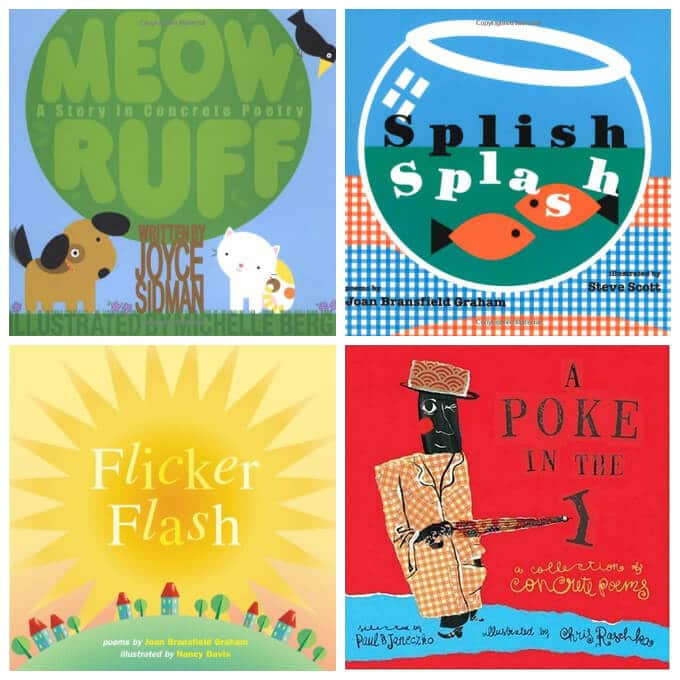
You and many of your readers love visual art, and I think you’d enjoy books of concrete poetry and the hands-on projects that they might inspire. Don’t miss Meow Ruff by Joyce Sidman: everything in the book is made of words! In Joan Bransfield Graham’s Splish Splash, there’s a popsicle made of words, and in Flicker Flash, a campfire. For older children, there’s a collection from Paul B. Janeczko called A Poke in the I.
JEAN: Are there any more good children’s poetry books you can recommend to us?
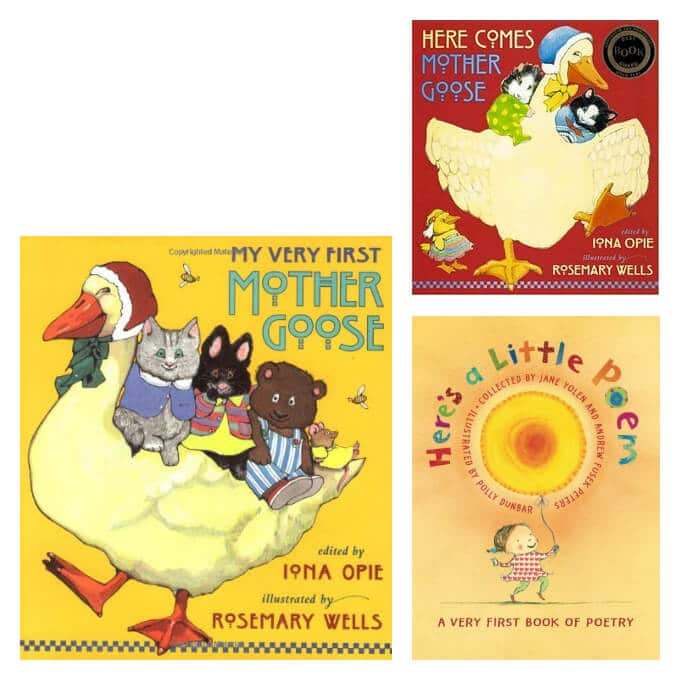
SUSAN MARIE: Of course! You and I connected about our enthusiasm for the books of rhymes collected by Iona Opie, My Very First Mother Goose and Here Comes Mother Goose. There’s a wonderful book of poems called Here’s a Little Poem: A Very First Book of Poetry that you must go find right away. It’s such a welcoming volume.
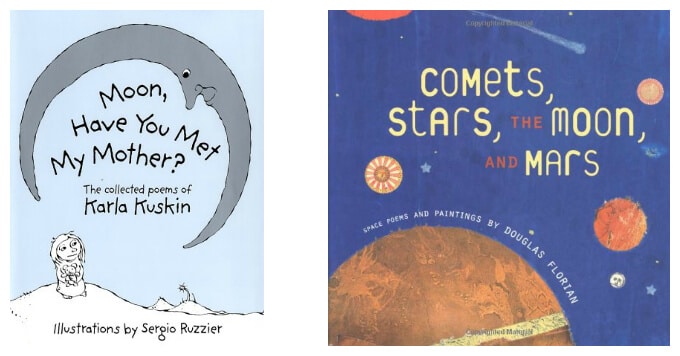
I like to remind people to locate the poetry section in their library–sometime’s it’s tricky to find. Look for friendly poets like Karla Kuskin and Douglas Florian.
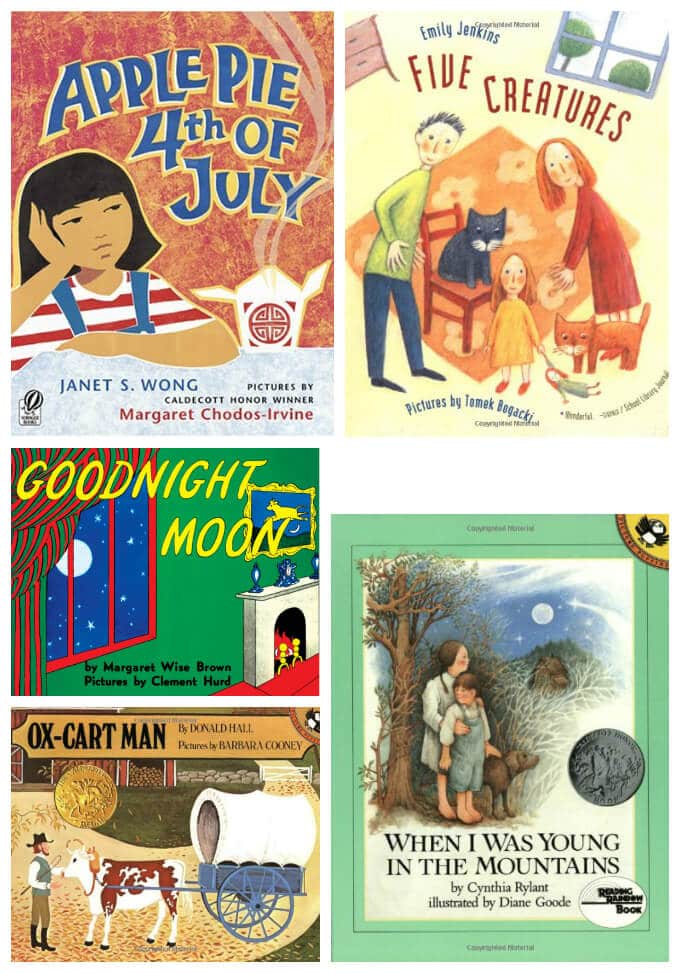
And you’ll find poetry in picture books as well. The text of Goodnight Moon is a poem, and many picture book texts have the attributes of poetry. I’m thinking today of Ox-Cart Man, When I Was Young in the Mountains, Five Creatures, and Apple Pie 4th of July. I hope that your readers will look for my books, too!
JEAN: Anything else you’d like to add?
SUSAN MARIE: Thank you! Your blog is a joy to read, and I am inspired by the ways you vividly describe your creative path with children. I am honored to be part of the space you are making here at The Artful Parent.
JEAN: Thank you so much, Susan Marie!
By the way, Susan Marie has a relationship with her neighborhood bookstore, Micawber’s Books in St. Paul, Minnesota. Call them (651-646-5506) if you would like a signed copy of The House in the Night or To Be Like the Sun sent to you. Susan Marie signs her books when they come in. She’s also happy to stroll over and inscribe a book specially for you!
—
Readers who leave a comment to this interview by Thursday, December 3rd at 12 midnight EST will be entered into a random drawing for a signed copy of of Susan Marie’s book, The House In the Night.
Giveaway now closed.
Photos of Susan Marie Swanson (except book signing image) by Chris Bohnhoff
This post contains affiliate links.
Related Posts
-
Our Favorite Beautiful Picture Books for Children
These beautiful picture books combine gorgeous illustrations and techniques that are sure to inspire even…
-
Quiet-Time Art Game for Children
A simple and low-key art game to play with kids. Good for quiet time and…
-
Our Favorite Beautiful Picture Books for Children
These beautiful picture books combine gorgeous illustrations and techniques that are sure to inspire even…


